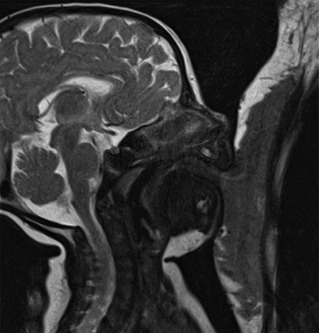- Record: found
- Abstract: found
- Article: found
Imaging the breastfeeding swallow: Pilot study utilizing real‐time MRI

Read this article at
Abstract
Objective
Knowledge of the breastfeeding swallow is limited by practical challenges. Radiation exposure to both mother and infant and the radiolucent properties of breastmilk make videofluoroscopy an unsuitable imaging modality. Furthermore, ultrasound is not ideal for capturing the complex 3‐dimensional functional anatomy of swallowing. In this study we explore the feasibility of using real‐time MRI to capture the breastfeeding swallow.
Methods
Prospective observational study: Review of imaging from 12 normal infants (<5 months of age) and their mothers while breastfeeding using real‐time MRI.
Results
Static images were successfully captured in 11 infants and dynamic images in nine infants. This imaging modality confirms the dorsal surface of the infant's tongue elevates the maternal nipple to the hard palate, closing the space around the nipple with no air visible in the oral cavity during sucking and swallowing. We obtained dynamic imaging of mandibular movement with sucking, palatal elevation and pharyngeal constriction with swallowing, diaphragm movement with breathing and milk entering the stomach. Breastmilk was easily visualized, being high intensity on T2 sequences. Technical challenges were encountered secondary to infant movement and difficulties acquiring and maintaining midsagittal orientation. The similarity in tissue densities of the lips, tongue, nipple and hard palate limited definition between these structures.
Conclusion
Real‐time MRI imaging was successful in capturing dynamic images of the breastfeeding swallow. However, technical and practical challenges make real‐time MRI unlikely at present to be suitable for swallow assessment in clinical practice. Advances in technology and expertise in dynamic image capture may improve the feasibility of using MRI to understand and assess the breastfeeding swallow in the near future.
Abstract
Related collections
Most cited references37
- Record: found
- Abstract: not found
- Article: not found
Coordination of suck-swallow and swallow respiration in preterm infants
- Record: found
- Abstract: found
- Article: not found
Maturational changes in the rhythms, patterning, and coordination of respiration and swallow during feeding in preterm and term infants.
- Record: found
- Abstract: found
- Article: not found
